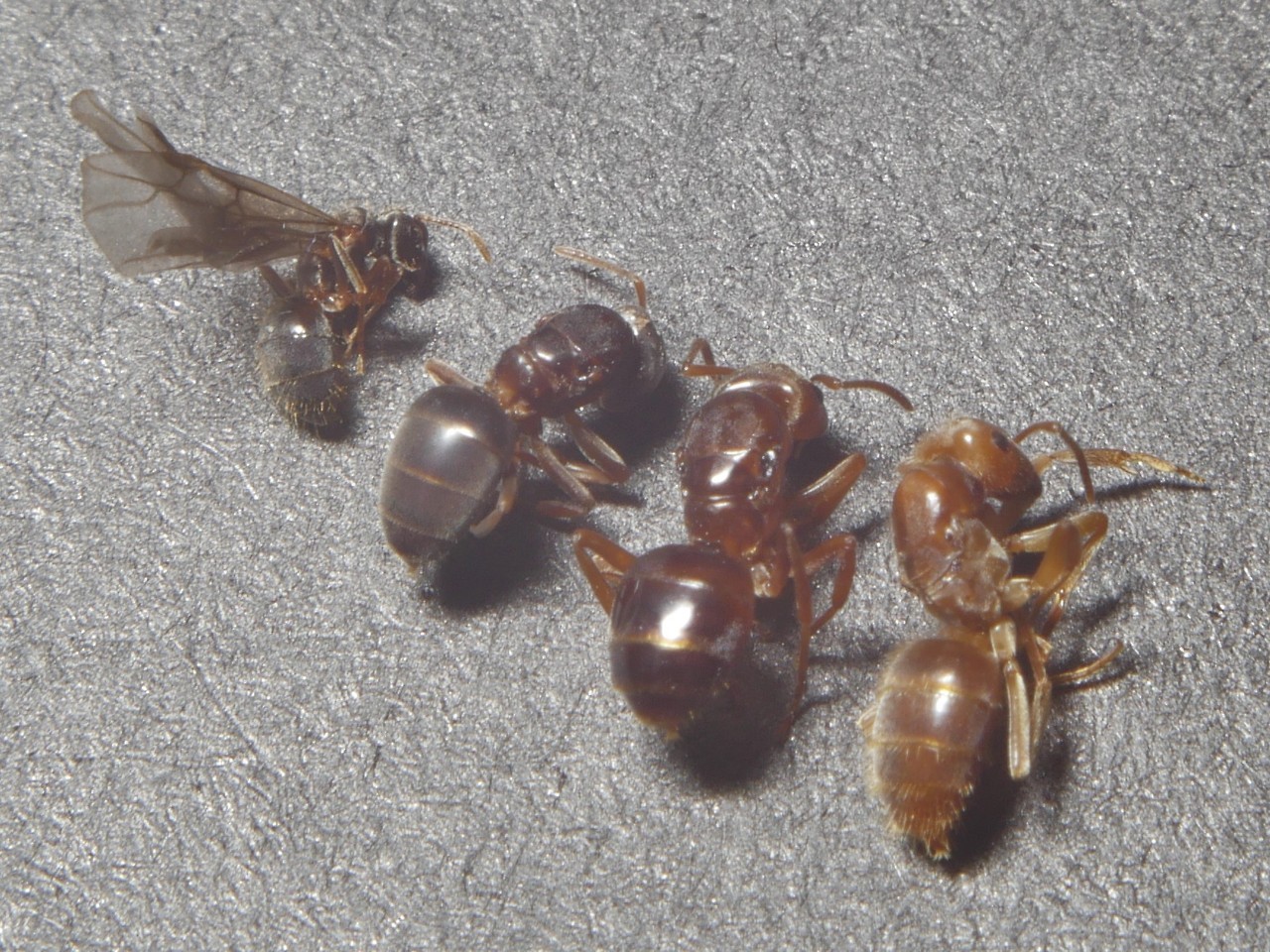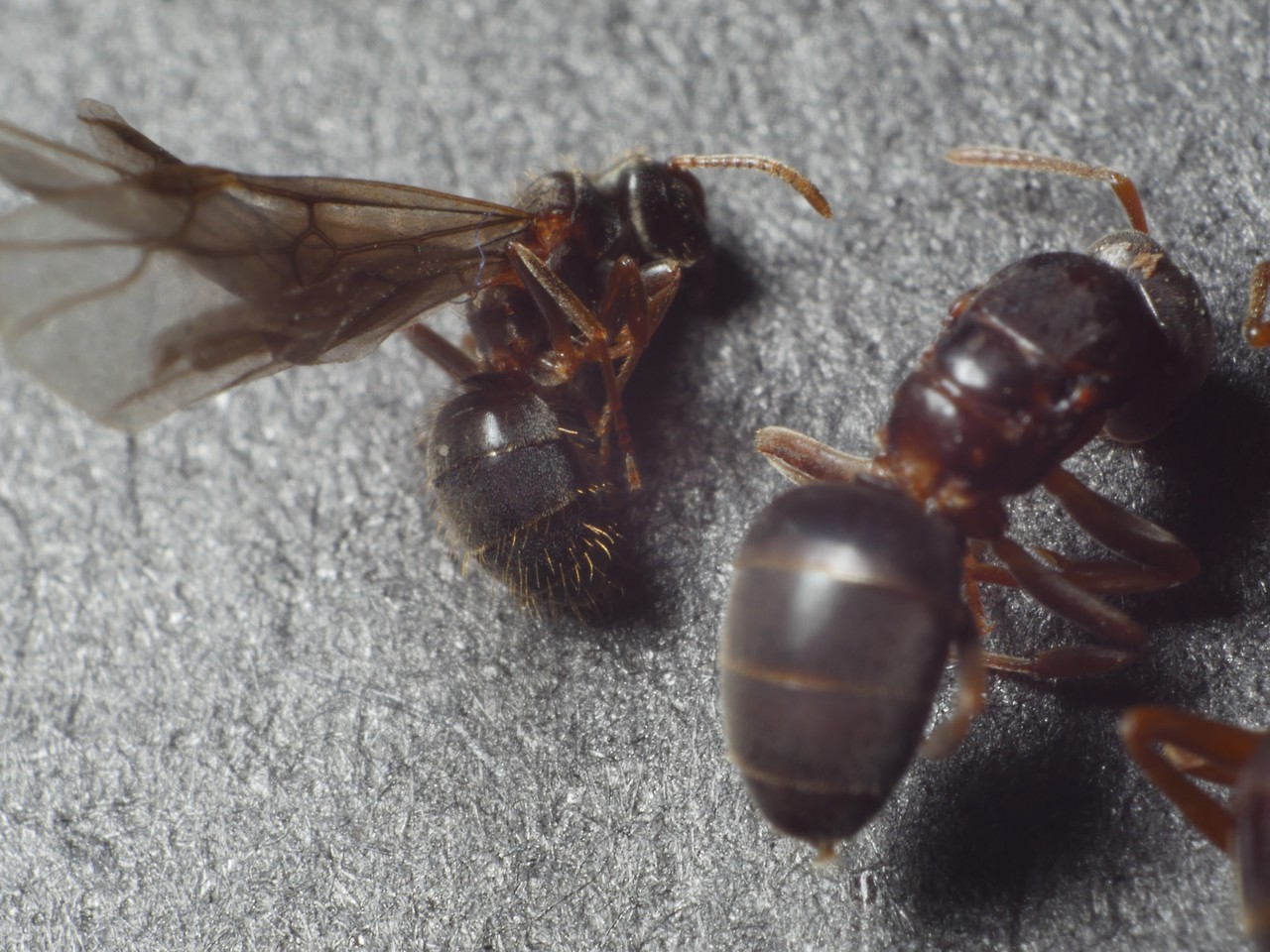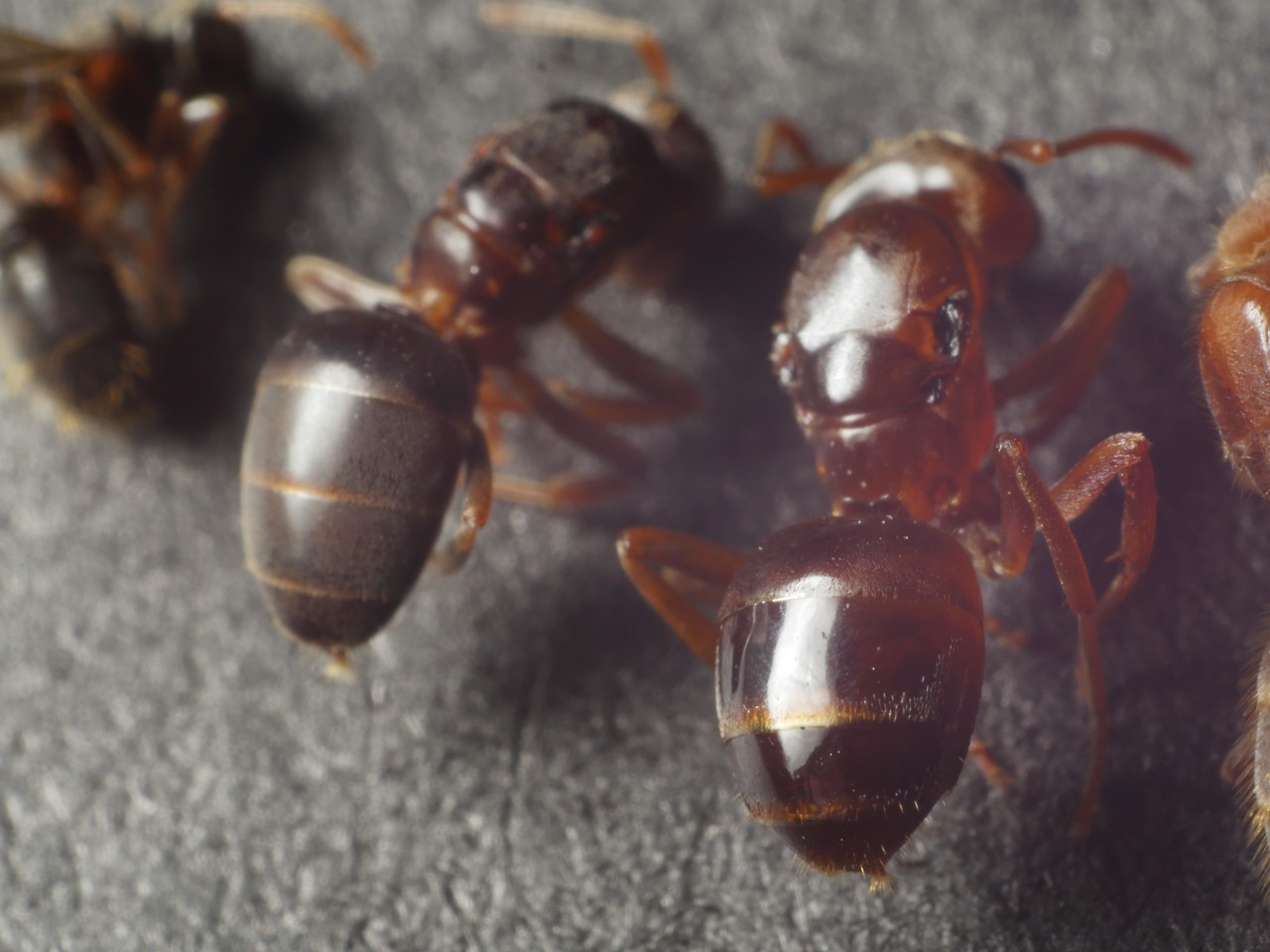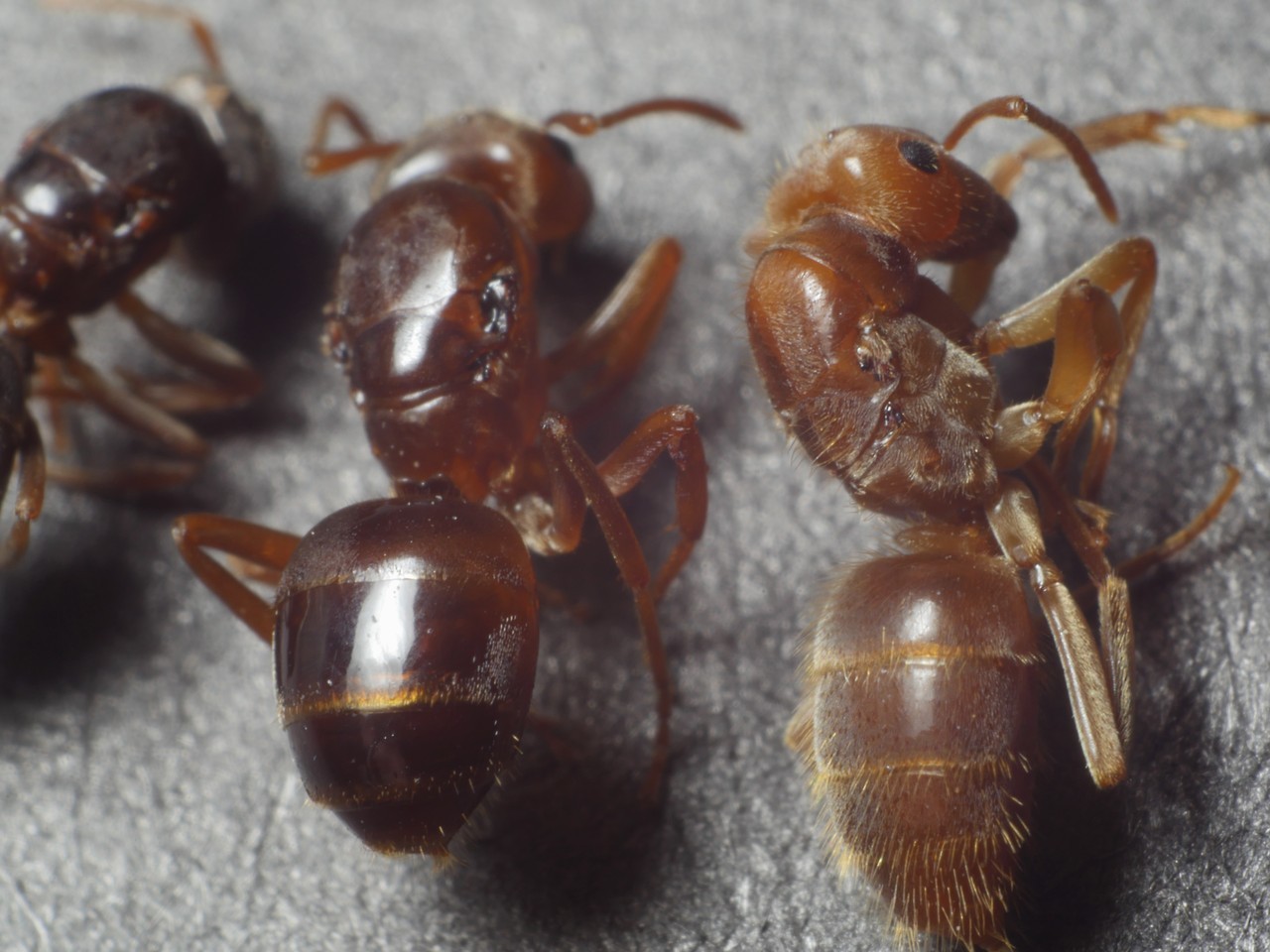My new claviger queen is even darker than that ![]()
- Formiculture.com
- Forums
- Gallery
- Members
- Member Map
- Chat

My new claviger queen is even darker than that ![]()
ALRIGHT! Know I know what to do with all these lasius parasites flying around!
Proverbs 6:6-8 New International Version (NIV)
6 Go to the ant, you sluggard;
consider its ways and be wise!
7 It has no commander,
no overseer or ruler,
8 yet it stores its provisions in summer
and gathers its food at harvest.
Would you say the four methods are in order from most to least risk? Are we talking proper ~40 °F refrigeration, or do you think ~65 °F in a wine cooler might be enough to take the edge off the aggression?
I think you'll want to do proper ~40ish degrees. 65ish isn't going to do much at all. I personally kept mine in there for 3 days before I took them back out and they had accepted. I tried it at first for only 1 day but they fought as soon as I took them out so I put them back in.
Just a small update -- My Lasius latipes queen is still alive, although I'm not sure if any of the brood from earlier this summer will make it to the worker stage. The host workers she chose to infiltrate are more than a year old at this point, so I gave her more host pupae to help ensure that there are enough young workers to specialize in the care of the queen and brood. The reservoir for their tube has dried up, so I am waiting and hoping for them to move into a larger, fresh one. There are presently a small group of large larvae, smaller larvae, eggs, and host pupae.
My Lasius umbratus colony is producing its first parasitic workers, which are larger and darker than their flavus-group host. The host workers were slowly culling the alien workers at first, but now the host is close to being outnumbered.
I offered a Lasius subumbratus queen to my Lasius alienus colony which has been orphaned for about seven months. I assumed that since the workers did not have a dominant reproductive, then they would be easily receptive to a parasitic queen (the pheromones suppressing their egg-laying behavior is absent, and the workers are now tending to numerous haploid larvae). I tried to keep an eye on her, but one moment she was just running around and the next she was dead and swarmed by workers. I know that Lasius subumbratus is a social parasite of L. pallitarsis, but having founded a host-relationship using flavus and umbratus group workers in the past, I have been interested in exploring host specificity of the various parasitic species. I think I will try giving them a Lasius umbratus dealate (which prefer to parasitize L. alienus) once those start flying, just to see if the absence of a queen pheromone might override the mature and aggressive nature of these older host workers. Alternatively, host preference will be a component to any potential success, but if the workers kill the Lasius umbratus queen, then I might consider the age of the workers to be more important than those other two factors. That would be something cool to explore earnestly someday.
If you've enjoyed using my expertise and identifications, please do not create undue ecological risk by releasing your ants. The environment which we keep our pet insects is alien and oftentimes unsanitary, so ensure that wild populations stay safe by giving your ants the best care you can manage for the rest of their lives, as we must do with any other pet.
Exotic ants are for those who think that vibrant diversity is something you need to pay money to see. It is illegal to transport live ants across state lines.
----
Black lives still matter.
I kept several Lasius murphyi queens so far. I believe that they might be one of the easiest queens to keep out of the citronella species. I often provide them with L. alienus or L. nearcticus callows. All of the queens that I've kept so far laid eggs and had larvae before passing away. I believe that this species has difficulty with performing trophallaxis with their host workers.
Here's a new introduction method: Sweet Introductions
1. Place a tiny drop of honey on the parasite queen's thorax
2. Place her directly in the test tube of her potential host workers
3. Workers might show aggression, but they will eventually drink off the honey. While the workers drink, the queen picks up pheromones.
I managed to get a Lasius minutus alate adopted by Lasius nearcticus. There were originally an alate and dealate, but the dealate was killed in the fridge by the host, whereas the alate seems to have had no problem integrating. The wings are not shed, and the jury's still out as to whether she is mated.
Lasius latipes is still alive, but I have not seen any of her workers yet (visibility is poor for now). It wasn't the best first year for her, apparently. Still plenty of brood. Her tube is just about out of water, and the colony is slowly emigrating to the new tube.
If you've enjoyed using my expertise and identifications, please do not create undue ecological risk by releasing your ants. The environment which we keep our pet insects is alien and oftentimes unsanitary, so ensure that wild populations stay safe by giving your ants the best care you can manage for the rest of their lives, as we must do with any other pet.
Exotic ants are for those who think that vibrant diversity is something you need to pay money to see. It is illegal to transport live ants across state lines.
----
Black lives still matter.
Is it just me or is there a lot of mites on the latipes queen.
Is it just me or is there a lot of mites on the latipes queen.
It's not just you, haha. She's been like that since capture. I attribute the slow start to potential, minor host incompatibilities and lack of availability of their favorite foods. I only see the mites clinging to the adults, namely the hairy queen, and since she is laying plenty of eggs and not dead, I think they are harmless.
If you've enjoyed using my expertise and identifications, please do not create undue ecological risk by releasing your ants. The environment which we keep our pet insects is alien and oftentimes unsanitary, so ensure that wild populations stay safe by giving your ants the best care you can manage for the rest of their lives, as we must do with any other pet.
Exotic ants are for those who think that vibrant diversity is something you need to pay money to see. It is illegal to transport live ants across state lines.
----
Black lives still matter.
I've noticed that Lasius interjectus and murphyi are usually okay when they are introduced to workers. However, all of my claviger, speculiventris and umbratus queens would massacre their workers, lowering the amount of hosts from over 20 to about 5. This would be done consistently among all my queens with the exception of the one I had (the one in the formicarium last year), where the worker had a lot more space too run. Have any of you experienced this? or is it that I use test tubes tat are too small. (10mm*100mm)
I haven't noticed a significant species-by-species approach to nest infiltration, although most of my experience is with Chthonolasius, as I've only ever collected Lasius latipes to represent Acanthomyops. Some queens are careful, running away and only needing to kill one or two workers (when not being introduced to callows) while others are more forceful and stay in the tube with the host until all the aggressive workers are dead. Sometimes there is zero noticeable aggression. I think we need to take into account properties of the host workers as much as the properties of the queens. We barely understand what is actually happening between the two.
If you've enjoyed using my expertise and identifications, please do not create undue ecological risk by releasing your ants. The environment which we keep our pet insects is alien and oftentimes unsanitary, so ensure that wild populations stay safe by giving your ants the best care you can manage for the rest of their lives, as we must do with any other pet.
Exotic ants are for those who think that vibrant diversity is something you need to pay money to see. It is illegal to transport live ants across state lines.
----
Black lives still matter.
Can I get some pics of your Lasius minutus queens? I've never seen a wild specimen.
I recently caught a Lasius latipes queen and am planning on keeping her. Would you think that Lasius flavus workers would possibly accept the queen, seeing as they are in the same group as the L. nearcticus you used for yours?
Can I get some pics of your Lasius minutus queens? I've never seen a wild specimen.
She is super dead now, so absolutely! hopefully I can find another dealate before the end of the year. Right now all I have is another alate.These pictures aren't the best, but they do the job.
Here are the four most common Chthonolasius in Eastern North America, from left to right: Lasius minutus, Lasius umbratus, Lasius speculiventris, Lasius subumbratus. Notice that the queens of Lasius minutus are quite a bit smaller than typical Lasius, at about 5mm, although the workers are otherwise pretty normal:

Lasius minutus can sometimes be mistaken for smaller Lasius umbratus queens, but the long hairs on the gaster easily distinguish them:

And for funsies, here are Lasius umbratus and Lasius speculiventris, to help show off the difference in hair coverage/shininess on the gaster:

And finally, the relatively hairless Lasius speculiventris next to the very hairy Lasius subumbratus:

Edited by Batspiderfish, September 27 2017 - 3:13 PM.
If you've enjoyed using my expertise and identifications, please do not create undue ecological risk by releasing your ants. The environment which we keep our pet insects is alien and oftentimes unsanitary, so ensure that wild populations stay safe by giving your ants the best care you can manage for the rest of their lives, as we must do with any other pet.
Exotic ants are for those who think that vibrant diversity is something you need to pay money to see. It is illegal to transport live ants across state lines.
----
Black lives still matter.
I recently caught a Lasius latipes queen and am planning on keeping her. Would you think that Lasius flavus workers would possibly accept the queen, seeing as they are in the same group as the L. nearcticus you used for yours?
There's honestly no way to tell, since nobody's really raised a Lasius latipes queen to the worker stage yet.
If you've enjoyed using my expertise and identifications, please do not create undue ecological risk by releasing your ants. The environment which we keep our pet insects is alien and oftentimes unsanitary, so ensure that wild populations stay safe by giving your ants the best care you can manage for the rest of their lives, as we must do with any other pet.
Exotic ants are for those who think that vibrant diversity is something you need to pay money to see. It is illegal to transport live ants across state lines.
----
Black lives still matter.
I recently caught a Lasius latipes queen and am planning on keeping her. Would you think that Lasius flavus workers would possibly accept the queen, seeing as they are in the same group as the L. nearcticus you used for yours?
There's honestly no way to tell, since nobody's really raised a Lasius latipes queen to the worker stage yet.
And it doesn't look like I'll be the first. She died.
Wow! Lasius minutus is tiny!
It turns out that I've been seeing those queens repeatedly on the tennis courts (I thought that they were mutant L. umbratus ![]() )
)
I've just found a Lasius claviger queen (she kept her wings). I've successfully introduced her to three Lasius nearcticus workers and six pupae.
0 members, 1 guests, 0 anonymous users